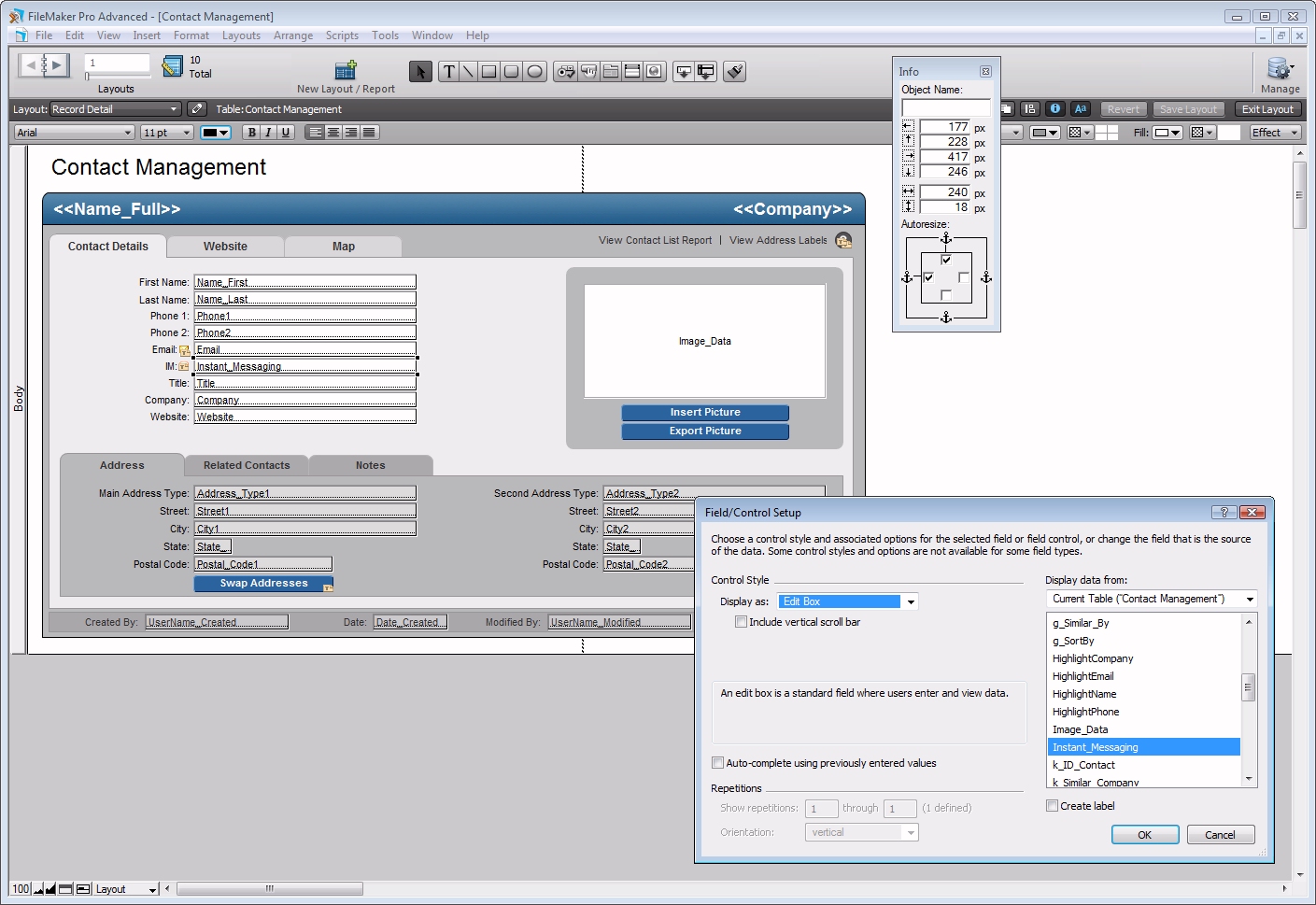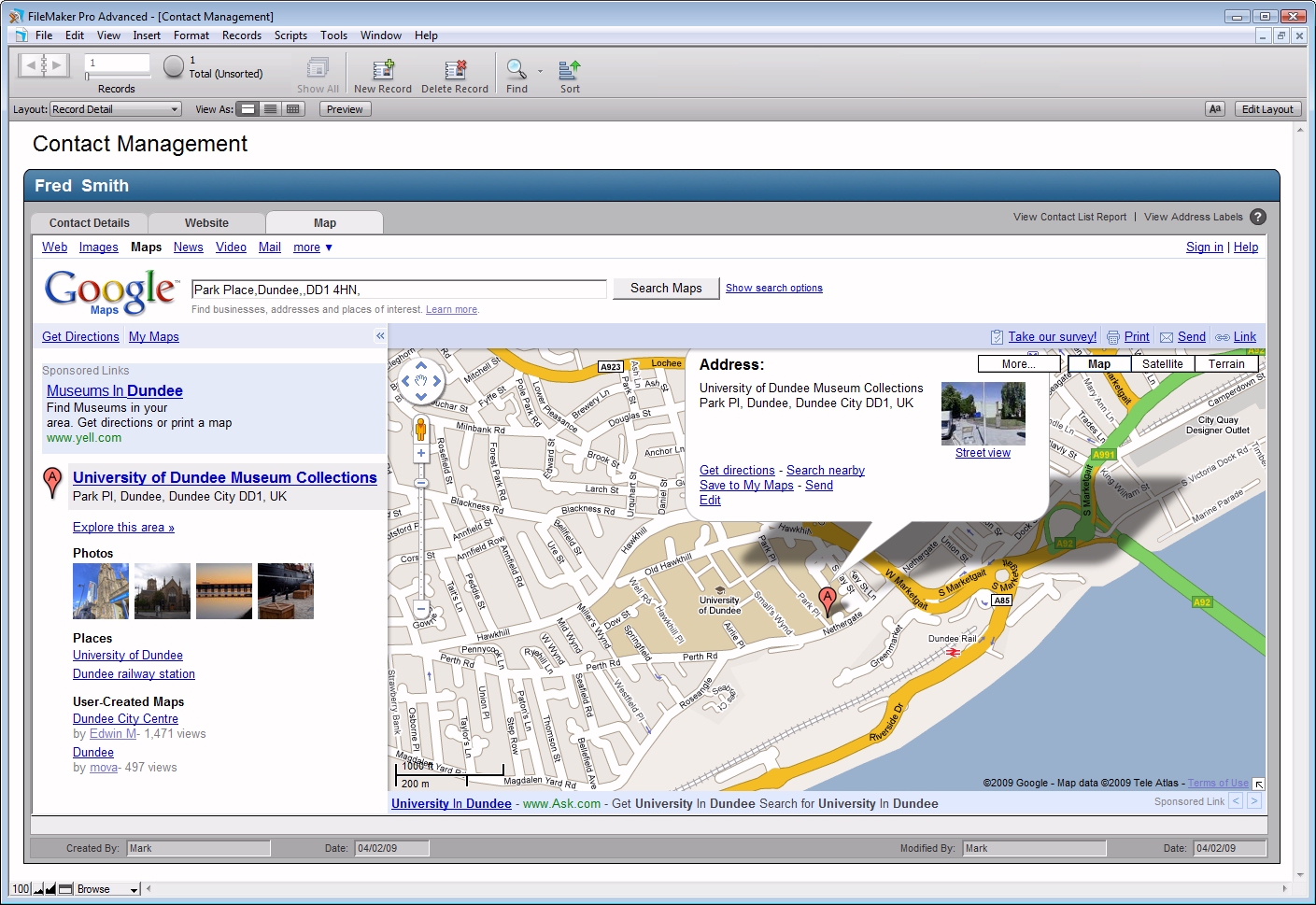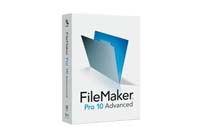FileMaker Pro 10 Advanced review
We review the next generation of the popular database management software.
With many of the good things we already like about FileMaker made oh-so-much better, it’s very hard to find fault with the latest version of this database management software, which brings benefits to PC and Mac users alike.




FileMaker Pro 10 Advanced.
FileMaker is a tool that lets you build databases: it's been around for a long time and the latest version (10) is now available. One of FileMaker's great strengths is that it is available for both the PC and the Mac. That's great news for Mac users because they have, historically at least, been well served when it comes to a choice of database management systems (DBMS). It is even better news for companies that use both because FileMaker databases will run on both.
FileMaker has always had great facilities for the design of reports and forms. Pleasingly, this strength continues and is enhanced in version 10. The most obvious change is the movement of the Status toolbar to the top of the screen it's been clinging to its traditional position at the side of the screen for far too long. And to help you get started designing databases, there are 10 new templates to give your database a slick professional look.
The program also supports a good selection of file types for data import including Excel, tab- and comma-separated text, ODBC, DBF (dBASE) amongst others. However, that of FileMaker's main competitor, Access, is conspicuous by its absence.
These imports let you pull data into a FileMaker database where it is managed by the product's data-handling engine and can be displayed and manipulated. Reasonably large data sets for small- to medium-sized enterprises (SMEs) are well within FileMaker's comfort zone but its data-handling engine is simply not in the same class as those of SQL Server or Oracle which are used for massive data sets in multi-national enterprises.
That said, you now have the option of storing your data in these scalable and robust engines whilst retaining the advantages of FileMaker's friendly user interface. The newly-updated ESS (External SQL Data Sources the D is obviously silent) feature provides live two-way connections to other DBMS including Microsoft SQL Server 2008, Oracle 11g and MySQL 5.1 Community Edition. The data to which you connect can be treated in exactly the same way as data stored within FileMaker: you can build reports, add calculations and so on, just like you would FileMaker data, without the need to know the SQL querying or data manipulation languages.
Another noteworthy new feature is the Script Trigger. This provides the ability (as the name suggests) to trigger scripts from user actions. So, for example, you could ensure that the database only displays fields to collect the card number and expiry date if the user elects to pay by credit card. Also new is the ability to save a set of find' requests and then to carry them out with a single click. And, by using Dynamic Reports, you can make changes on the fly' and it's easier to create customised reports.
Get the ITPro daily newsletter
Sign up today and you will receive a free copy of our Future Focus 2025 report - the leading guidance on AI, cybersecurity and other IT challenges as per 700+ senior executives
-
 ‘Phishing kits are a force multiplier': Cheap cyber crime kits can be bought on the dark web for less than $25 – and experts warn it’s lowering the barrier of entry for amateur hackers
‘Phishing kits are a force multiplier': Cheap cyber crime kits can be bought on the dark web for less than $25 – and experts warn it’s lowering the barrier of entry for amateur hackersNews Research from NordVPN shows phishing kits are now widely available on the dark web and via messaging apps like Telegram, and are often selling for less than $25.
By Emma Woollacott Published
-
 Redis unveils new tools for developers working on AI applications
Redis unveils new tools for developers working on AI applicationsNews Redis has announced new tools aimed at making it easier for AI developers to build applications and optimize large language model (LLM) outputs.
By Ross Kelly Published
-
 Google layoffs continue with "hundreds" cut from Chrome, Android, and Pixel teams
Google layoffs continue with "hundreds" cut from Chrome, Android, and Pixel teamsNews The tech giant's efficiency drive enters a third year with devices teams the latest target
By Bobby Hellard Published